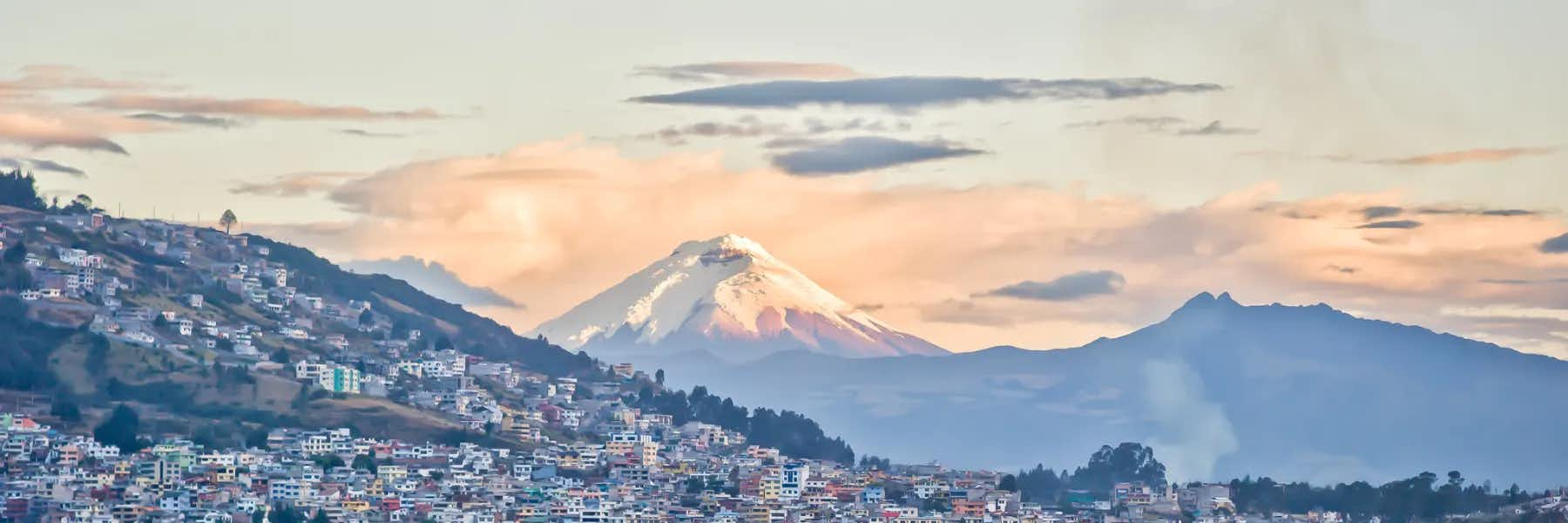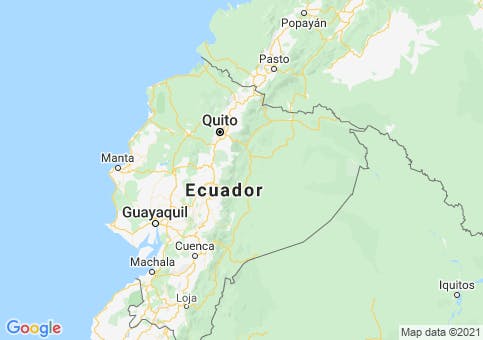Ecuador lies directly on the equator, so the entire country enjoys 12 hours of direct equatorial daylight 365 days a year. However, the climate you will experience depends largely on where you are in Ecuador, since there are four distinct geographical areas—the Sierra (mountains), the Oriente (eastern rainforests), the La Costa (Pacific coastal plains), and the Galapagos Islands.
For example, Ecuador’s capital, Quito, lies in the Central Valley between the Andean Mountains’ eastern and western ridges. The equator is less than 20 miles north of the city, yet at an altitude of 9,350 feet (2,900 meters), Quito’s climate is spring-like year around: about 50 F at night and as high as 76 F during the day. The sun makes the difference. You can comfortably stroll out on a glorious Quito afternoon in shorts and a T-shirt, but you’ll need to take your wool sweater in case the clouds roll in. The equatorial sun is intense, but when it’s obscured by clouds, you realize how high in the Andes you really are. In fact, cold weather gear is needed for high altitude hiking and mountain climbing.
Other mountain cities and towns like Cuenca, Loja, Cotacachi, and Baños have climates similar to Quito. You will find though, that as you drop in elevation, the average temperature will rise.
If you like your days and nights on the warmer side, go straight to the coast where you'll enjoy temperatures that reach between 80 F and 90 F. Living on or near the beach will allow you to enjoy those fresh ocean breezes, while inland coastal properties are likely to be warmer and more humid.
Head towards the Amazon Basin if you'd like the warmer weather but without the sand. In the towns of Tena and Puyo you can enjoy that warm tropical weather of the coast, but in a rainforest environment surrounded by lush jungle, tropical birds, and Amazon tributaries.
The temperatures in Ecuador don’t change much throughout the year, so the seasons of spring, summer, winter, and fall pass unnoticed. The one seasonal change however is that of precipitation.
Ecuador experiences a wet and dry season each year, though the timeframe of each varies by region. Throughout the highlands October through May tends to be wetter than the months of June through September. January through April are often rainier and warmer on the coast while the months of April through November are when you'll find the most rain near the Amazon.
Whatever your preference, just about any type of weather can be found in Ecuador.
Get Your Free Ecuador Report Here
Get Your Free Ecuador Report Here
Learn more about Ecuador and other countries in our daily postcard e-letter. Simply enter your email address below and we'll send you a FREE REPORT - Ecuador: Live Like Royalty on Your Social Security.

By submitting your email address, you will receive a free subscription to IL Postcards and special offers from International Living and our affiliates. You can unsubscribe at any time, and we encourage you to read more about our Privacy Policy.












